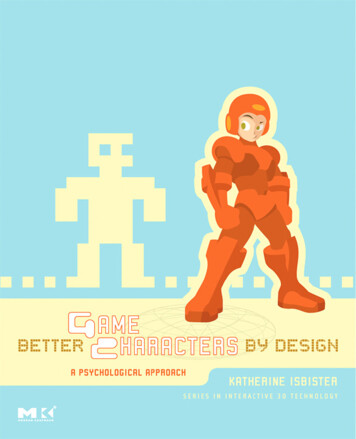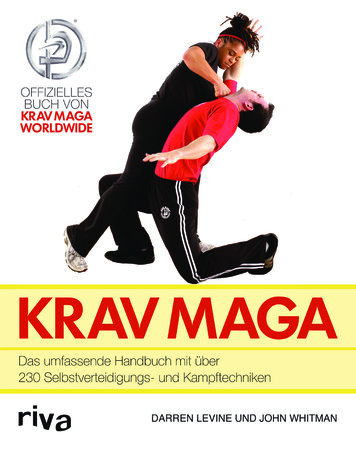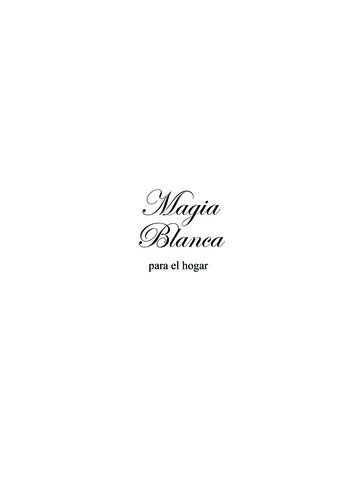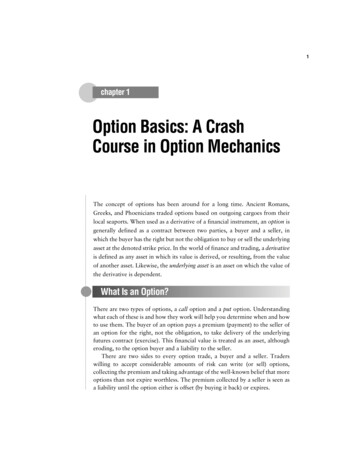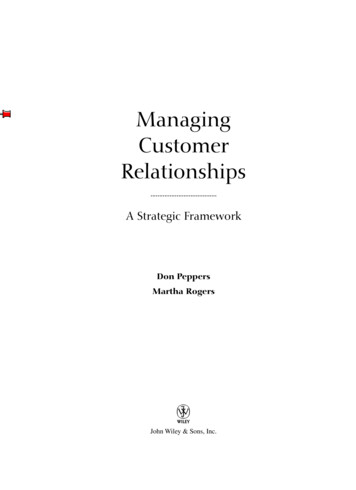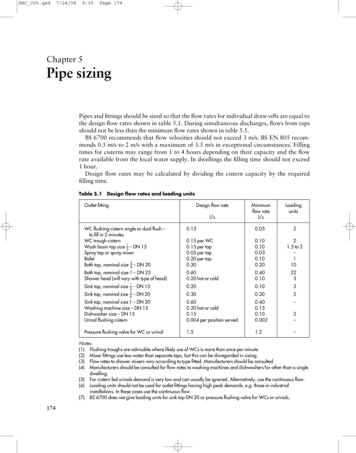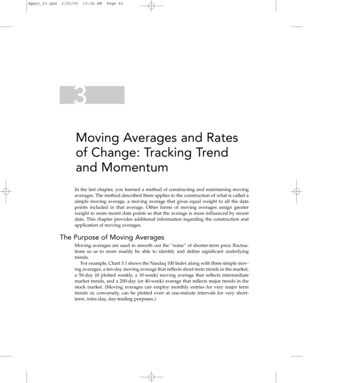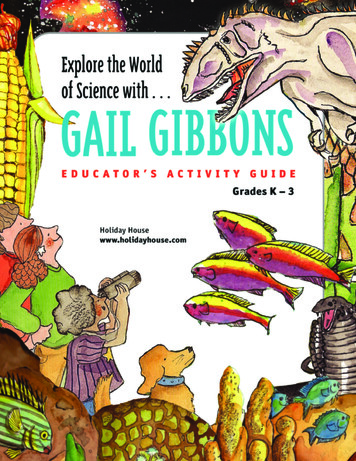
Transcription
Dear Educator,Myfavorite question to ask as a child was“Why?” I was always curious about theworld around me—and I still am! The subjects for my books are always personal—they aredriven by my own desire to know how something works.So when I research and write a book, I’m doing it for myselfas well! I choose subjects that are interesting and exciting tome, and those that I think will capture children’s attention. Ihope that this guide will help you promote curiosity in yourclassroom and beyond, and encourage students to becomeexplorers themselves. When they see how much is to be gainedby observation and imagination, they will want to do it all thetime!The world is a never-ending source of fascination and excitement. Have a wonderful time reading, questioning, exploring,and playing! Dive right in!
WELCOME!THE WORLD OF SCIENCE is an ever-expanding and ever-changing one. Every discoveryprompts further questions and further discoveries, and scientists may never know allthe answers!Eco-awareness has become a huge part ofthe public consciousness in recent years, andit is essential that our naturally curious children are imbued early on with respect for theplanet that we inhabit.What better way to inspire a new ecofriendly generation, than through GailGibbons’s works! Her bright, inviting booksaddress simple yet important topics in science and through clear text and vivid illustrations bring these topics to life.Getting StartedUsing Gail Gibbons’s Booksin Your ClassroomGail’s science books can be grouped in avariety of ways, in units ranging fromDinosaurs to Ecosystems to Space. There areeleven different units in all! See the full listing of units and books on the next page ofthis guide.This prolific author/illustrator’s completelist of books can also be studied individually,as part of an Author Study; or teachers canplan “A Year with Gail Gibbons,” using themonth-by-month activity planning guideavailable online. A complete listing of Gail’sbooks, including holiday favorites, can be foundat the back of this guide for easy reference.www.holidayhouse.comThis brand-new teacher’s guide showcasesGail’s newest science books—Coral Reefs;Snakes; Dinosaurs!; Galaxies, Galaxies!; TheVegetables We Eat; and her most recent book,Corn.Reproducible activities accompany eachtitle. There are activities to use pre-reading,during reading, and post-reading, includingjot charts, as well as a culminating activitythat can be applied to all of her books. A certificate at the end can be personalized toinduct students as members of the “GailGibbons Science Team.” We hope it willencourage young readers to become explorers both inside and outside the classroom.Gail’s endless wonder about the naturalworld is the driving force behind her books,and we hope that you and your students willshare the same passion!Be sure to visit us online at www.holidayhouse.comfor lots more activities for classroom use!FromCoral Reefs1
BOOK LISTThis at-a-glance thematic list of Gail Gibbons’s books will help to plan the year’s sciencecurriculum.DINOSAURSDinosaur DiscoveriesDinosaurs! New in 2008!INSECTS & SPIDERSMonarch ButterflySpidersREPTILES &HIBIANSFrogsSea TurtlesSnakes New in 2008!MAMMALSBatsCatsDogsElephants of AfricaNew in 2008!Giant PandasGrizzly BearsHorses!PigsPolar BearsRabbits, Rabbits& More Rabbits!WhalesWolvesECOSYSTEMSCoral ReefsDesertsMarshes & SwampsSPACEGalaxies, Galaxies!The Moon BookThe Planets Third EditionStargazersBIRDSChicks & ChickensDucks!Gulls . . . Gulls . . . Gulls. . .OwlsPenguins!MARINE LIFECoral ReefsSea TurtlesSharksWhalesWEATHERThe Reasons for SeasonsWeather Wordsand What They MeanON THE FARMChicks & ChickensCorn New in 2008!FarmingHorses!PigsRabbits, Rabbits& More Rabbits!NATURAL SCIENCEApplesThe Berry BookFrom Seed to PlantThe Pumpkin BookThe Vegetables We EatFor a complete list of books by Gail Gibbons,see page 16 of this guide.From Corn2www.holidayhouse.com
ReproducibleNAMECLASSDistinguishing Fact from OpinionDirections: Place an F by the statements of fact and an O by the statements of opinion.1. There are more coral reefs near Australia than near the United States.2. The coral in the shore zone is prettier than the coral in the fore reef zone.3. A coral polyp is formed when a planula attaches itself to a reef.4. There are more than 700 known kinds of hard coral polyps.5. Coral reefs are more important than desert habitats.FromCoral Reefs6. Coral reefs are important to people.7. Brain coral is prettier than yellow soft coral.8. The largest coral reef lies off the coast of Australia.9. Coral reefs can help reduce global warming.This reproducible is part of Explore the World of Science . . . withGail Gibbons Educator’s Guide. To read all of Gail Gibbons’s bookspublished by Holiday House, visit your local library or bookstore.Check out www.holidayhouse.com for more fun activities!Meet Gail Gibbons –— her dog, Wilbur, and her cats, Miles and Davis!www.holidayhouse.comIf you like this book, then check out more from Gail!HC: 978-0-8234-0900-6PB: 978-0-8234-1030-9HC: 978-0-8234-1191-7PB: 978-0-8234-1373-73
ReproducibleNAMECLASSDirections: As you read or listen to the book, complete the jot chart by listing the fish and coralsthat are appropriate for each category. Then sketch and label some of your favorites on the backof this sheet.Shore Zone CoralsCrest Reef Zone CoralsHard Coral PolypsSoft Coral PolypsFish and Coral Polyps Active During the DayFish and Coral Polyps Active During the NightIf you like this book, then check out more from Gail!HC: 978-0-8234-0960-0PB: 978-0-8234-1068-24Fore Reef Zone CoralsHC: 978-0-8234-1388-1PB: 978-0-8234-1516-8This reproducible is part of Explore the World of Science . . . withGail Gibbons Educator’s Guide. To read all of Gail Gibbons’s bookspublished by Holiday House, visit your local library or bookstore.Check out www.holidayhouse.com for more fun activities!Meet Gail Gibbons –— her dog, Wilbur, and her cats, Miles and Davis!www.holidayhouse.com
ReproducibleNAMECLASSExclusion BrainstormingFromSnakesDirections: You are going to listen to the book Snakes by Gail Gibbons. Yourteacher will lead you in reading the following words aloud. Decide which wordsyou think will be in the book. Lightly draw a line through words youdo not think you will find in Snakes. Be prepared to explain whyyou think the word or words are not in the fangspreyeggsjawbonesscalesenemiescoilsvenominner earspectaclesegg toothJacobson’s eethThis reproducible is part of Explore the World of Science . . . withGail Gibbons Educator’s Guide. To read all of Gail Gibbons’s bookspublished by Holiday House, visit your local library or bookstore.Check out www.holidayhouse.com for more fun activities!Meet Gail Gibbons –— her dog, Wilbur, and her cats, Miles and Davis!www.holidayhouse.comIf you like this book, then check out more from Gail!HC: 978-0-8234-1052-1PB: 978-0-8234-1134-4HC: 978-0-8234-1006-4PB: 978-0-8234-1081-15
Directions: With a partner, read Snakes by Gail Gibbons, stopping after every two pages to think ofimportant words in the book. Write your important words in the appropriate alphaboxes below.ABCDEFGHIJKLMNOPQRSTUVWXYZIf you like this book, then check out more from Gail!HC: 978-0-8234-1276-1PB: 978-0-8234-1519-96HC: 978-0-8234-1457-4PB: 978-0-8234-1637-0This reproducible is part of Explore the World of Science . . . withGail Gibbons Educator’s Guide. To read all of Gail Gibbons’s bookspublished by Holiday House, visit your local library or bookstore.Check out www.holidayhouse.com for more fun activities!Meet Gail Gibbons –— her dog, Wilbur, and her cats, Miles and Davis!www.holidayhouse.com
ReproducibleNAMECLASSDiscover DinosaursDirections: Match a word at the bottom of the page to its description at the top. Write the wordnext to its description, putting one letter on each line. When you finish filling in the lines, thecircled letters will spell a word vertically.1. one of the earliest groups of dinosaurs2. remains of a plant or an animal3. dinosaurs with large horns and frilly heads4. the group of dinosaurs with beaks or bills5. the group of plated dinosaursFromDinosaurs!6. the group of heavily armored dinosaurs7. a long-necked plant eater8. a meat-eating dinosaur with claws9. a carnivore that may haverun 10 miles per wer:This reproducible is part of Explore the World of Science . . . withGail Gibbons Educator’s Guide. To read all of Gail Gibbons’s bookspublished by Holiday House, visit your local library or bookstore.Check out www.holidayhouse.com for more fun activities!Meet Gail Gibbons –— her dog, Wilbur, and her cats, Miles and Davis!www.holidayhouse.comIf you like this book, then check out more from Gail!HC: 978-0-8234-1971-5PB: 978-0-8234-2030-8HC: 978-0-8234-1793-37
ReproducibleNAMECLASSDinosaur DescriptionsDirections: While you are reading Dinosaurs! by Gail Gibbons, make a list of the types of dinosaursyou encounter. Scientists have categorized nonbird dinosaurs into seven main groups. Put your listin alphabetical order, then fill in the chart below according to the dinosaurs’ characteristics.DinosaurPreferred FoodIf you like this book, then check out more from Gail!HC: 978-0-8234-1127-6PB: 978-0-8234-1202-08HC: 978-0-8234-1347-8PB: 978-0-8234-1515-1DescriptionSizeThis reproducible is part of Explore the World of Science . . . withGail Gibbons Educator’s Guide. To read all of Gail Gibbons’s bookspublished by Holiday House, visit your local library or bookstore.Check out www.holidayhouse.com for more fun activities!Meet Gail Gibbons –— her dog, Wilbur, and her cats, Miles and Davis!www.holidayhouse.com
ReproducibleNAMECLASSA Walk Through the GalaxiesDirections: Before reading Galaxies, Galaxies!, preview the material by doing a picture walkthrough the book. As any good scientist would, make note of ten observations below. After readingthe book, find a partner and exchange sheets. Were your partner’s questions about galaxiesanswered in the book?1. I am thinking.2. I am wondering.3. I am thinking.4. I am wondering.5. I am thinking.6. I am wondering.7. I am thinking.8. I am wondering.9. I am thinking.10. I am wondering.FromGalaxies, Galaxies!This reproducible is part of Explore the World of Science . . . withGail Gibbons Educator’s Guide. To read all of Gail Gibbons’s bookspublished by Holiday House, visit your local library or bookstore.If you like this book, then check out morefrom Gail!HC: 978-0-8234-1297-6PB: 978-0-8234-1364-5HC: 978-0-8234-2156-5PB: 978-0-8234-2157-2sCheck out www.holidayhouse.com for more fun activities!Meet Gail Gibbons –— her dog, Wilbur, and her cats, Miles and Davis!www.holidayhouse.com9
ReproducibleNAMECLASSGalaxy Quest!Directions: After reading the book Galaxies, Galaxies!, answer the questions scattered around thegalaxy. When you’ve finished, color in the galaxies!1. Stars, gas clouds, and dust in the Milky Way Galaxy are held together by.2.is the study of stars and other celestial bodies.by placing3. An Englishman, Isaac Newton, invented thetwo mirrors inside a tube in order to bounce light back to a lens that then magnifies it.4. Yellow and orange stars are theand coolest.are often built on mountaintops since there are no5.distracting lights there and the air is clear, allowing for more visibility.6. The1,000 feet wide., located in Puerto Rico, has a telescope dish that is’s discovery of Andromeda proved that the Milky7. AstronomerWay was not the only galaxy in the universe.8. Distance in space is measured in light-years instead ofbecause it is too enormous.9. The Milky Way is in a group ofIf you like this book, then check out more from Gail!HC: 978-0-8234-1174-0PB: 978-0-8234-1238-910HC: 978-0-8234-0983-9PB: 978-0-8234-1507-6galaxies.This reproducible is part of Explore the World of Science . . . withGail Gibbons Educator’s Guide. To read all of Gail Gibbons’s bookspublished by Holiday House, visit your local library or bookstore.Check out www.holidayhouse.com for more fun activities!Meet Gail Gibbons –— her dog, Wilbur, and her cats, Miles and Davis!www.holidayhouse.com
ReproducibleNAMEBefore and AfterCLASSFromThe Vegetables We EatDirections: Read each statement below before you read the Gail Gibbonsbook The Vegetables We Eat. Put a check in the BEFORE column if youthink the statement next to it is true. After you have read the book, gothrough the statements again. Check the AFTER column if you now know thestatement is true. See how much you learned from your reading.BEFORESTATEMENT1. The edible part is the same for all vegetables.AFTER2. Botanists classify vegetables according to the part of the vegetablethat is eaten.3. Turnips, carrots, radishes, and rutabagas are all root vegetables.4. There are about 300 types of potatoes in the world.5. All stem vegetables are perennials.6. Tomatoes, eggplants, sweet peppers, pumpkins, and butternutsquash all can be considered fruit vegetables.7. Annuals are plants that must be replanted in order to grow again.8. Although it is called the yard-long bean, this bean only grows to be24 inches in length.9. Soybeans were introduced to the United States by inventorBenjamin Franklin.10. California contributes one-third of all the vegetables grown in theUnited States.11. Hydroponics involves gardening without soil.12. South America is the original home of the ever-popular potato.This reproducible is part of Explore the World of Science . . . withGail Gibbons Educator’s Guide. To read all of Gail Gibbons’s bookspublished by Holiday House, visit your local library or bookstore.If you like this book, then check out more from Gail!Don’t MCheck out www.holidayhouse.com for more fun activities!Meet Gail Gibbons –— her dog, Wilbur, and her cats, Miles and Davis!www.holidayhouse.comissCorn-0 -8234-2169-5New inFall 2008!HC: 978HC: 978-0-8234-1497-0PB: 978-0-8234-1669-1HC: 978-0-8234-0682-1PB: 978-0-8234-0797-211
ReproducibleNAMECLASSAll About Vegetables!Directions: While reading the book The Vegetables We Eat by Gail Gibbons, fill out the chart belowabout the eight groups of vegetables.CHARACTERISTICSGROUP NAMEEXAMPLESSMALL SKETCHBulbFlower BudFruitLeafRootSeedStemTuberIf you like this book, then check out more from Gail!HC: 978-0-8234-1700-1PB: 978-0-8234-1939-5HC: 978-0-8234-0872-6PB: 978-0-8234-1025-512This reproducible is part of Explore the World of Science . . . withGail Gibbons Educator’s Guide. To read all of Gail Gibbons’s bookspublished by Holiday House, visit your local library or bookstore.Check out www.holidayhouse.com for more fun activities!Meet Gail Gibbons –— her dog, Wilbur, and her cats, Miles and Davis!www.holidayhouse.comFrom The Vegetables We Eat
ReproducibleNAMECLASSBetween the KernelsWhat does the book tell you aboutwhere corn was first grown?How was corn important tothe Native American Indians and Pilgrims?Draw and label a corn plant.What are the different types of corn?List examples for each type.List some interesting facts youlearned about corn below.After reading page 30 in the book, write downall the corn products that your family uses.This reproducible is part of Explore the World of Science . . . withGail Gibbons Educator’s Guide. To read all of Gail Gibbons’s bookspublished by Holiday House, visit your local library or bookstore.Check out www.holidayhouse.com for more fun activities!Meet Gail Gibbons –— her dog, Wilbur, and her cats, Miles and Davis!www.holidayhouse.comFrom Corn13
ReproducibleGo Fishing with Science!After your young adventurer has read several Gail Gibbons books, create a deck offifty-two cards on heavy card stock or poster board. The cards should be twoinches by three inches in size.On the back of each card, write the name of a Gail Gibbons book; on the front,write one interesting fact from that book. Put the same fact and book cover ontwo different cards, creating a match as in the “Go Fish” tradition. You will havetwenty-six pairs of cards in total. From the book The Vegetables We Eat, forexample, you might put the book’s title on one side of two cards and this fact onthe other: “Tomatoes are considered to be fruits.” Be sure to draw facts from several books so that the players can show off what they have learned from multiplesources.Be sure to add an extra game card with the rules so that players can play independently.Advanced VersionFor more of a challenge, write different facts on each set of two cards. Your students will have to think harder to connect the books to each other!From Coral Reefs14www.holidayhouse.com
TEACHER SIGNATUREis hereby made a member ofTHE GAIL GIBBONS SCIENCE TEAMand is now endowed with all the privileges ofExploration and Observation.This is to certify thatwww.holidayhouse.comGAIL GIBBONS
APPLESHC: 978-0-8234-1497-0PB: 978-0-8234-1669-1THE ART BOXHC: 978-0-8234-1386-7PB: 978-0-8234-1556-4BATSHC: 978-0-8234-1457-4PB: 978-0-8234-1637-0THE BERRY BOOKHC: 978-0-8234-1697-4BICYCLE BOOKHC: 978-0-8234-1199-3PB: 978-0-8234-1408-6FARMINGHC: 978-0-8234-0682-1PB: 978-0-8234-0797-2FROGSHC: 978-0-8234-1052-1PB: 978-0-8234-1134-4FROM SEED TO PLANTHC: 978-0-8234-0872-6PB: 978-0-8234-1025-5GALAXIES, GALAXIES!HC: 978-0-8234-2002-5BOAT BOOKHC: 978-0-8234-0478-0GIANT PANDASHC: 978-0-8234-1761-2PB: 978-0-8234-1828-2CATSHC: 978-0-8234-1253-2GRIZZLY BEARSHC: 978-0-8234-1793-3CHICKS & CHICKENSHC: 978-0-8234-1700-1PB: 978-0-8234-1939-5GULLS . . . GULLS . . .GULLS . . .HC: 978-0-8234-1323-2PB: 978-0-8234-1664-6CORAL REEFSHC: 978-0-8234-2080-3HORSES!HC: 978-0-8234-1703-2PB: 978-0-8234-1875-6PENGUINS!HC: 978-0-8234-1388-1PB: 978-0-8234-1516-8TOOL BOOKHC: 978-0-8234-0444-5PB: 978-0-8234-0694-4PIGSHC: 978-0-8234-1441-3PB: 978-0-8234-1554-0TRAINSHC: 978-0-8234-0640-1PB: 978-0-8234-0699-9THE PLANETSThird EditionHC: 978-0-8234-2156-5PB: 978-0-8234-2157-2THE VEGETABLES WE EATHC: 978-0-8234-2001-8PB: 978-0-8234-2153-4POLAR BEARSHC: 978-0-8234-1593-9PB: 978-0-8234-1768-1WEATHER WORDS ANDWHAT THEY MEANHC: 978-0-8234-0805-4PB: 978-0-8234-0952-5THE PUMPKIN BOOKHC: 978-0-8234-1465-9PB: 978-0-8234-1636-3WHALESHC: 978-0-8234-0900-6PB: 978-0-8234-1030-9RABBITS, RABBITS &MORE RABBITS!HC: 978-0-8234-1486-4PB: 978-0-8234-1660-8WOLVESHC: 978-0-8234-1127-6PB: 978-0-8234-1202-0THE REASONS FORSEASONSHC: 978-0-8234-1174-0PB: 978-0-8234-1238-9HolidaysCHRISTMAS IS . . .HC: 978-0-8234-1582-3PB: 978-0-8234-1767-4SEA TURTLESHC: 978-0-8234-1191-7PB: 978-0-8234-1373-7EASTERHC: 978-0-8234-0737-8PB: 978-0-8234-0866-5SHARKSHC: 978-0-8234-0960-0PB: 978-0-8234-1068-2GROUNDHOG DAY!HC: 978-0-8234-2003-2PB: 978-0-8234-2116-9ICE CREAM: The FullScoopHC: 978-0-8234-2000-1PB: 978-0-8234-2155-8SNAKESNew in 2008!HC: 978-0-8234-2122-0HALLOWEEN IS . . .HC: 978-0-8234-1758-2PB: 978-0-8234-1797-1MARSHES & SWAMPSHC: 978-0-8234-1347-8PB: 978-0-8234-1515-1SPIDERSHC: 978-0-8234-1006-4PB: 978-0-8234-1081-1ST. PATRICK’S DAYHC: 978-0-8234-1119-1PB: 978-0-8234-1173-3MONARCH BUTTERFLYHC: 978-0-8234-0773-6PB: 978-0-8234-0909-9STARGAZERSHC: 978-0-8234-0983-9PB: 978-0-8234-1507-6THANKSGIVING IS . . .HC: 978-0-8234-1849-7PB: 978-0-8234-1979-1DUCKS!HC: 978-0-8234-1567-0THE MOON BOOKHC: 978-0-8234-1297-6PB: 978-0-8234-1364-5VALENTINE’S DAY IS . . .HC: 978-0-8234-1852-7PB: 978-0-8234-2036-0ELEPHANTS OF AFRICANew in 2008!HC: 978-0-8234-2168-8OWLSHC: 978-0-8234-1880-0PB: 978-0-8234-2014-8SURROUNDED BY SEA:Life on a NewEngland FishingIslandHC: 978-0-8234-1941-XPB: 978-0-8234-2021-6CORNNew in 2008!HC: 978-0-8234-2169-5DESERTSHC: 978-0-8234-1276-1PB: 978-0-8234-1519-9DINOSAUR DISCOVERIESHC: 978-0-8234-1971-5PB: 978-0-8234-2030-8DINOSAURS!New in 2008!HC: 978-0-8234-2143-5DOGSHC: 978-0-8234-1226-6PB: 978-0-8234-1335-516EMERGENCY!HC: 978-0-8234-1128-3HOW A HOUSE IS BUILTHC: 978-0-8234-0841-2PB: 978-0-8234-1232-7www.holidayhouse.com
Author Photo by Kent Ancliffe“I love working with bright, bold, beautifulcolors. I also have a real love for nonfictionwriting and am happy that my work lets medelve deeply into so many different kinds oftopics. The research for any of my books takesa great deal of time and effort. To me, puttinga nonfiction book together is like watchingthe pieces of a puzzle finally fitting together. Bit by bit the book takes form. I reallyenjoy learning about things and introducingthem to children in words and pictures.“The process for doing most of my books isvery much the same. First I must have an ideathat really interests me. Then I do some writing. I always find an expert on the topic I amwriting about to make certain that what Ihave written is accurate. I work with my editors on the text until it is as good as it canpossibly be. Then I do rough sketches for thecover and the pages. Once I have discussedeverything with my editors and the art director we decide what changes I should make.Then I do the finished artwork. Once I havefinished the artwork I send it to the publisher to have it all printed and bound intobooks.”Gail Gibbons grew up writing stories anddrawing pictures to fit the words, and wishingshe lived in the country. After graduatingfrom the University of Illinois with a bachelor of fine arts degree, she became involved intelevision graphics. This led her to work on achildren’s TV show, where her desire to writeand illustrate children’s books was rekindled.Eventually Gail became a full-time writer andmoved to rural Vermont, where she could havea garden and as many pets as she wanted.Gail has written more than 140 books andhas made countless visits to schools. Thefeedback she gets from children is invaluableand often inspires ideas for future projects.Gail and her husband, Kent Ancliffe, have adog named Wilbur, and two cats, named Milesand Davis. They live in Vermont in a passivesolar house that Gail’s husband built, and onan island off the coast of Maine.For more photos, stories, and informationabout Gail, visit www.gailgibbons.com.VISIT US ON THE WEBOnline! Anytime!Check out these sites!HOLIDAY HOUSEwww.holidayhouse.comClick onFreeMaterials! Explore the World of Science. . . with Gail Gibbons Educator’s Guide A Year with Gail Gibbons ActivityPlanning Guide Author BiographyTHE OFFICIAL GAIL GIBBONS SITEwww.gailgibbons.com For more on Gail,including lots of photos!This guide was written by Terrell Young and Barbara Ward, Washington State University.
ElephantsNew in of Africa20 0 8!Holiday House425 MADISON AVENUE, NEW YORK, NY 10 017 WWW.HOLIDAYHOUSE.COM
This reproducible is part of Explore the World of Science . . . with Gail Gibbons Educator’s Guide. To read all of Gail Gibbons’s books published by Holiday House, visit your local library or bookstore. If you like this book, then check out more from Gail! Directions: Place an F by the
